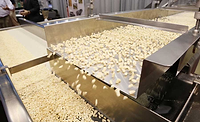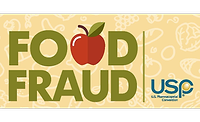While it’s well-known by professionals in the food industry, many consumers are surprised to find out that food ranks in the top five most valuable counterfeit markets.
Fake food is such a problem worldwide that the growth of the global anti-counterfeiting market will outpace the overall market segment growth of the food, beverage and pharmaceutical industries by roughly two to three times in the next five years, according to the Brand Protection and Product Traceability Market Research Report from PMMI, The Association for Packaging and Processing Technologies.
And, North America alone will account for nearly half of the total growth in the global anti-counterfeit food packaging market.
The entire food supply chain requires new measures of safety to close the gaps when tracking, authenticating and locating products. These solutions will go far beyond the idea of a simple fix, creating added layers of supply chain security.
Within the layered approach to brand protection are overt technologies — barcodes, holograms, watermarks, embossing and etching — and covert technologies — taggants, UV, infrared and fluorescent inks, Smart technology and radio frequency identification (RFID).
While new technologies are in research and development, 1D barcodes continue to anchor track and trace technology.
The traditional 1D barcodes are used most often by three out of four companies for tracking incoming product from the source through delivery at the food manufacturing facility, to packaging. All the goods come in dated with lot codes that are scanned upon plant entry, throughout all internal phases and back out into the supply chain.
There will always be a need for human readable dates and markings. And consumers need to be able to easily read information on the label for so they know if the product they have is genuine.
The traditional 1D barcodes are used most often by three out of four companies for tracking incoming product from the source through delivery at the food manufacturing facility, to packaging.
All the goods come in dated with lot codes that are scanned upon plant entry, throughout all internal phases and back out into the supply chain.
However, while 1D barcodes remain dominant, 2D barcode usage growing is growing via QR codes that can hold pictures, videos and more. Three-dimensional codes are emerging but only offer a colored pattern 2D barcode. Smaller or even invisible barcode technology will expand as the push toward “uncluttered packaging” encourages clean-labeling, clear packaging and imperceptible embedded codes.
While smart labels/tags are growing in retail and inventory tracking, the perishable goods segment—like food—projects to grow at the highest rate (especially labels).
Learn more at PMMI.org.



